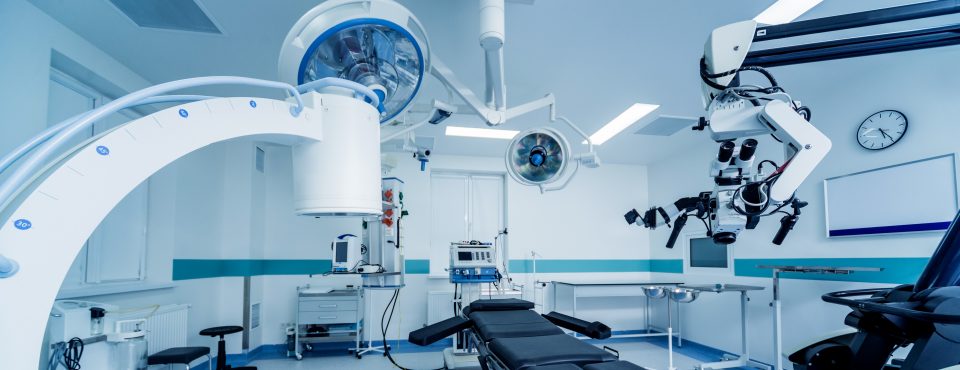

What is ISO 13485?
ISO 13485 is a stand-alone standard based on but not fully incorporating the ISO 9001 quality management system. It is intended to facilitate global alignment of regulatory requirements for the medical devices industry and applies to any organization involved any stage of the life-cycle of a medical device. This standard pertains to organizations that design, manufacture, distribute or service medical devices.
Medical devices are any instrument, apparatus, implement, machine, appliance, implant, reagent for in vitro use, software, material or similar article that is used on human beings or animals either alone or in combination with other devices. These devices are for the purpose of diagnosis, prevention, monitoring, treatment or alleviation of disease or injury, supporting or sustaining life, and more.
The medical devices industry is continuously evolving, expanding and becoming more competitive. The demand for medical devices increases globally as more nation experience middle-class growth. Companies in this industry have a duty to meet both customer expectations and applicable regulations while continuing to strengthen their product development life-cycles to meet market requirements.
There are numerous reasons to become ISO 13485 certified to ensure compliance and customer satisfaction in the regulated medical devices industry by creating positive impacts within your organization and to the world including:
- Enhancing your trustworthiness and image;
- Becoming more ground-breaking and competitive;
- Gaining new clients and being able to do business throughout the world;
- Improve customer satisfaction;
- Improve production, processes and product realization;
- Improve decision-making through data analysis;
- Increase employee engagement and company values of continuous improvement; and
- Better documentation and records practices.
Any size company can become ISO 13485 certified and enjoy the benefits of global freedom to trade, consistent quality and focused risk management to grow market share, have efficient operations and larger profits margins.
Why ISO 13485 Certification?
The medical devices industry is highly regulated throughout the world to ensure product quality and safety to the patient. Becoming ISO 13485 certified is a proactive maneuver to prioritize patient safety and consider internal and external risks. Companies that are certified to this global standard are traditionally considered to have best practices in their operation, comply with regulatory requirements and have more ease entering into new markets while conforming with the governing body’s initiatives.
Any size company that is involved with a stage of the life-cycle of a medical device can seek ISO 13485 certification and realize the advantage of potentially doing business globally.
A well-established and robust quality management system is necessary to ensure patient safety, customer satisfaction and regulatory compliance. ISO 13485 requires more document and record controls on work environment, product realization and data analysis for risk management. If your company is interested in entering into or increasing market share within the medical devices industry with patient safety and regulatory compliance as priorities, then ISO 13485 certification will be a key addition to your operation.
What are the Components of ISO 13485?
ISO 13485 includes several components of the ISO 9001:2015 quality management system but is not followed completely. ISO 13485 is more specific to the medical customer’s needs, medical regulations and global compliance directives from organizations such as the FDA, Health Canada and the European Union. The standard follows the process-based approach encouraging risk-based management for a) understanding and meeting requirements; b) considering processes in terms of added value; c) obtaining results of process performance and effectiveness; and d) improving processes based on objective measurements. It has 8 clauses to address these, which are:
- Scope
- Normative References
- Terms and Definitions
- Quality Management System
- Management Responsibility
- Resource Management
- Product Realization
- Measurement, Analysis and Improvement
How Can We Help You?
Don’t try to manage it all alone! Linqs has years of experience and a successful track record assisting medical devices manufacturers, design and developers, distributors and service companies with certification compliance. ISO 13485’s consistent focus on risk management and measurement for improvement can be complex to navigate. We help you understand the importance of the standard through education & training while developing or improving your quality management system for ISO 13485 compliance.
Phase 1 – Training, Assessment, and Gap Analysis
- Provide training on ISO 13485 clauses and compliance;
- Review the organization system(s) including internal and external interested stakeholders;
- Review of ISO 13485 requirements based on the organization system(s);
- Identify the gaps where remediation is needed.
Duration: 1 week
Phase 2 – Compliance Program Management and Procedure Development
- Prioritize the gaps which can be closed in a short time frame;
- Develop plan of actions & milestones to obtain ISO 13485 compliance;
- Develop robust documented quality management system;
- Engage with each department involved with quality and operations; and
- Advise on best quality management system practices.
Deliverables:
- Quality Policy, Quality Objectives and Quality Scope;
- Risk analysis management in context to stakeholders and product realization;
- Develop procedures for the organization’s effective operations;
- Assist with verification and validation requirements;
- Develop document and records controls;
- Develop customer feedback and complaint handling processes; and
- Develop data analysis and continuous improvement processes.
Duration: Varies depending on the size and scope of the organization
Phase 3 – Continuous Compliance Monitoring (Optional)
- Perform Internal Audits;
- Assess and identify the new gaps a result of changes in operations, regulations, and customer focus;
- Updates to the quality management system including revision changes to risk analysis, processes, significant operation developments, quality scope and documentation controls;
- Customer requirements, customer complaints, and audit findings;
- Assistance with representation during audits;
- Advise on continuous improvement; and
- Continuous education & training for your organization.
Duration: Varies depending on task(s)
